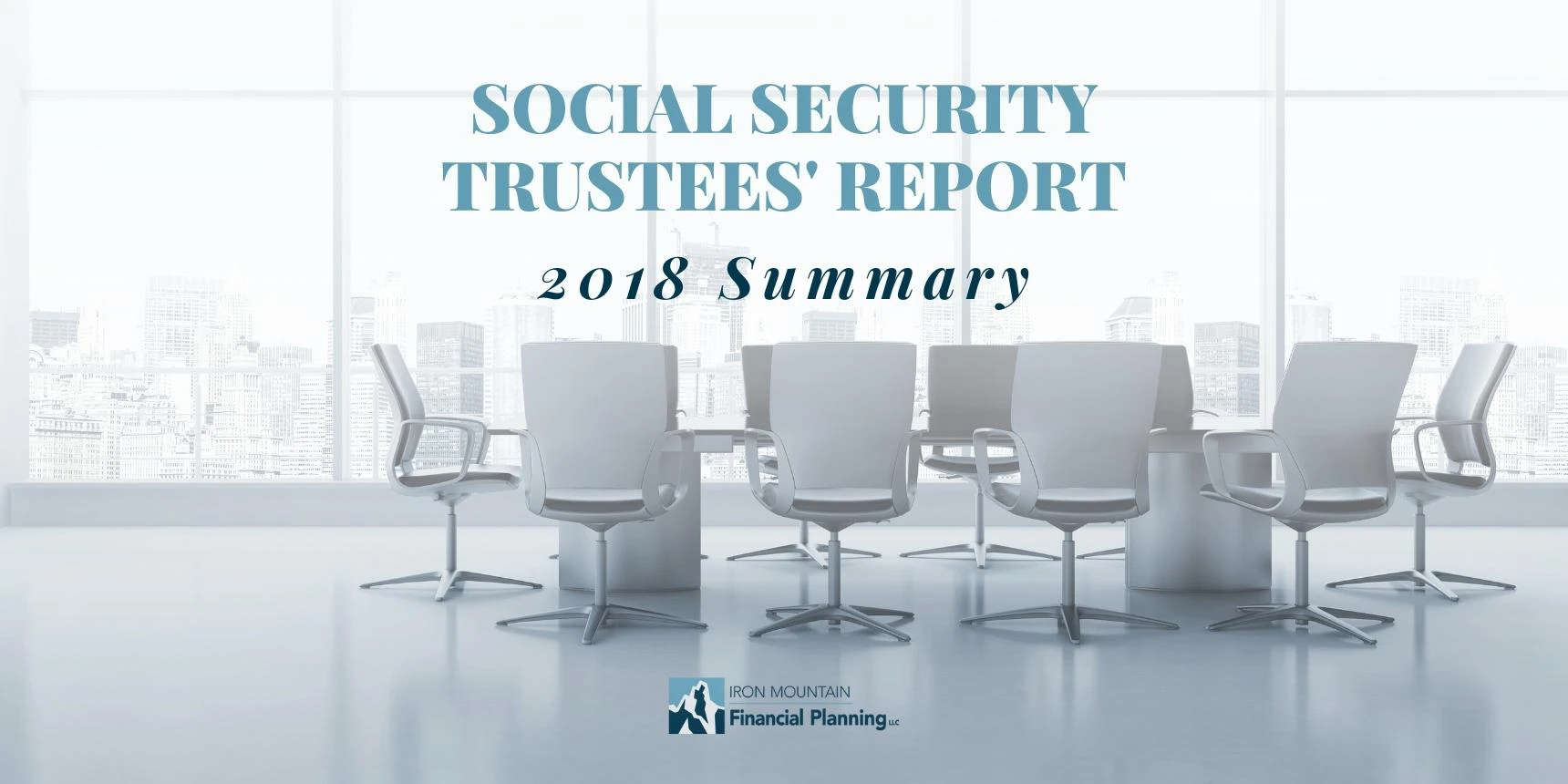Once again, the Trustees for Social Security release their annual report for the previous year. This year the 260-page report goes into great detail about the current financial status, future assumptions, and projections.
This year’s Trustees Report continues the trend that the Social Security program faces long term funding shortages. These will need to be addressed sooner or later. Like almost every other personal financial topic, it is best to educate yourself on the issues. This will help you understand how it is likely to affect you personally.
View the Full 2018 Trustees Report HERE.
The Beginning of the Draw Down
For the first time since 1982, the Social Security program will pay out more in benefits than it collects in taxes AND earns in interest from the Trust Fund. The interest earned from the Trust Fund (balance of $2,892 billion as of the end of 2017) has covered the difference in taxes collected and benefits paid in recent years.
However, 2018 marks the first year since 1982 that the interest earned will not cover this difference. This signifies the beginning of the draw down of the Trust Fund. The shortage is expected to continue throughout the 75 year projection period considered in the Trustees’ report.
Similar to last year’s report, the Social Security Trust Fund is projected to be fully depleted by 2034. At that time, the taxes collected would be sufficient to pay 79% of expected benefits; AND the Trust Fund would be exhausted. All beneficiaries would face a 21% reduction in benefits, 16 years from now.
Trustee Suggested Options
Sixteen years really isn’t that far away. The Trustees outline options that, if implemented immediately, would resolve the long-term deficit in the Social Security program.
These would include:
- increasing revenues by an amount equivalent to a payroll tax rate increase of 2.78%
- reducing scheduled benefits by 17% for all current and future beneficiaries (or 21% if the reductions were applied only to new enrollee’s)
- or some combination of raising taxes and reducing scheduled benefits.
Delaying implementation of these options to 2034 increases the required payroll tax increase to 3.87%. It could also result in the reduction of all scheduled benefits by 23% in order to keep the Social Security program solvent the entire 75-year projection period. The sooner a change or combination of changes is implemented, the smaller the change needs to be.
Delays in Changes
While lawmakers have a broad list of options that could close the Social Security long-term financing shortfall, another consideration is allowing time for the changes to be implemented.
Delays to implementing needed changes limits available time to gradually phase in changes. It also gives today’s workers less time to plan for changes in benefits or taxes.
If nothing else, this year’s report serves as an important reminder that the Social Security program’s funding shortfall needs to be addressed soon.
If you find yourself wanting to feel more confident about how Social Security retirement benefits fit into the puzzle of your retirement planning – it’s what I love to do for a living. Click here to schedule your 30-minute introductory call. Let’s see if my no-cost, no-obligation Discovery, and Observations process would move you closer to retiring with confidence.





